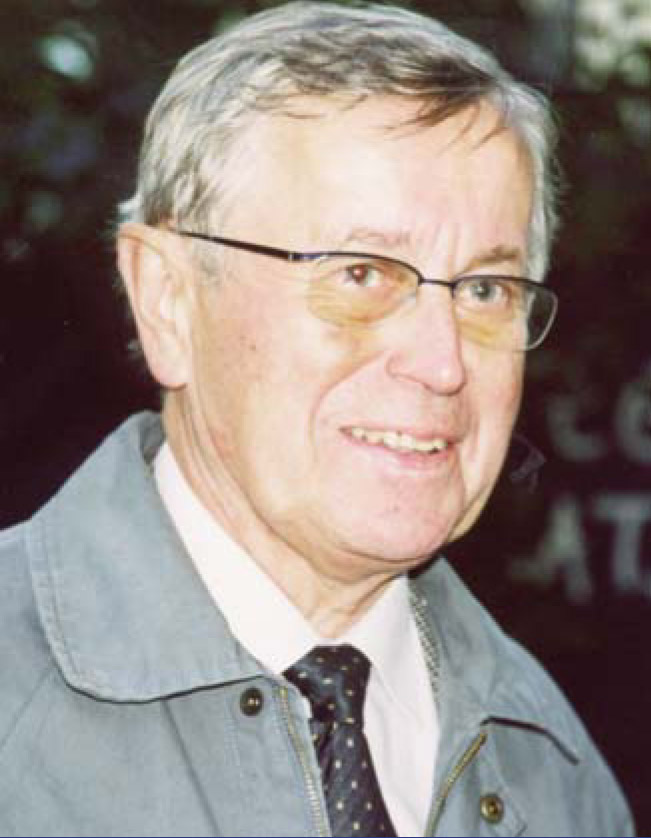Indrek Martinson
DOI: 10.1063/1.3490508
Indrek Martinson, an internationally recognized expert on accelerator-based atomic physics, died unexpectedly but peacefully in Södra Sandby, Sweden, on 14 November 2009. Indrek was an emeritus professor at the University of Lund in Sweden and director of the university’s department of atomic spectroscopy; he also was a former chair of the physics section of the Royal Swedish Academy of Sciences, which oversees the awarding of the Nobel Prize in Physics.
Indrek was born on 26 December 1937 in Tartu, Estonia. Although it had been independent since 1918, during World War II Estonia was occupied by the Soviet Union, then by Germany, and then again by the Soviet Union. With the second Soviet occupation in 1944, Indrek and his family were forced to leave their home and become refugees in Germany. Two years later the Martinsons immigrated to Sweden, where Indrek obtained citizenship.
Indrek’s first research studies began in 1961 and were in beta- and gammaray spectroscopy, carried out under Manne Siegbahn at the Nobel Institute for Physics in Stockholm. In 1964 Indrek, Torsten Alväger, and Hans Ryde performed a measurement that set a lower limit for the lifetime of the proton. The measurement subsequently provided a test of weak-interaction theories. In 1968, at the suggestion of institute director Ingmar Bergström, Indrek began studies in time-resolved fast-ion-beam spectroscopy. Those methods were being developed at the University of Arizona by Stanley Bashkin and William Bickel, and Indrek spent one year as a visiting scientist there.
After a productive year abroad, Indrek returned to Stockholm, and together with Jan Bromander and Gordon Berry arranged the Second International Conference on Beam-Foil Spectroscopy, held in June 1970 in Lysekil on the west coast of Sweden. The conference marked a great expansion of the field of accelerator-based atomic physics, with many active laboratories reporting new results. By then, lifetime studies were complemented by fine- and hyperfine-structure measurements using coherent-excitation and quantum-beat methods. Siegbahn, retired but still active at the Nobel Institute, was intrigued by the possibilities of atomic structure studies using accelerators, and each month Indrek and Siegbahn met to discuss the latest results. In 1971 Indrek completed his filosofie doktor thesis titled “Investigations of Atomic Spectra and Transition Probabilities Using Beam-Foil Excitation.”
In 1976 Bengt Edlén’s retirement from the University of Lund left vacant the professorship once held by Janne Rydberg. In a highly selective competition, Indrek was chosen to occupy that chair and lead the university’s department of atomic spectroscopy. Rather than completely reorganizing the department, Indrek established a synergy between the high-wavelength- resolution spectroscopy of Edlén and his own time-resolved measurements. He also introduced laser- and tokamak-produced plasma light sources, synchrotron- radiation measurements, and Fourier transform spectroscopy. He pioneered the measurement of lifetimes of multiply excited states, developed a method that combines quantum-beat and lifetime measurements to obtain unprecedented accuracies in half-lives and fine-structure splittings, and devised an ingenious method for measuring forbidden transition rates through differential lifetime measurements. Many of his halflife measurements have altered accepted elemental solar and stellar abundances.
Indrek created an atmosphere of international collaboration that brought together many individuals and techniques. He opened exchanges between scientists in the West and those in Estonia, Lithuania, Russia, China, and Japan. A touching moment occurred in 1991, when Indrek returned to the city of his birth to receive an honorary doctorate from the University of Tartu. He was awarded Estonia’s Order of the White Star in 2001 for service to the country.
Indrek’s life was rich and varied. In addition to his abilities as a physicist, he had a great love for classical music and sports and a vast knowledge of both. A top-ranked chess player in Stockholm, Indrek often entertained visiting international chess masters and was able to hold Bobby Fischer to a draw.
Indrek was a gifted and imaginative scientist, a great humanitarian, and one of the kindest and most personable people that I have known.

Indrek Martinson

More about the Authors
Lorenzo J. Curtis. University of Toledo, Toledo, Ohio, US .




